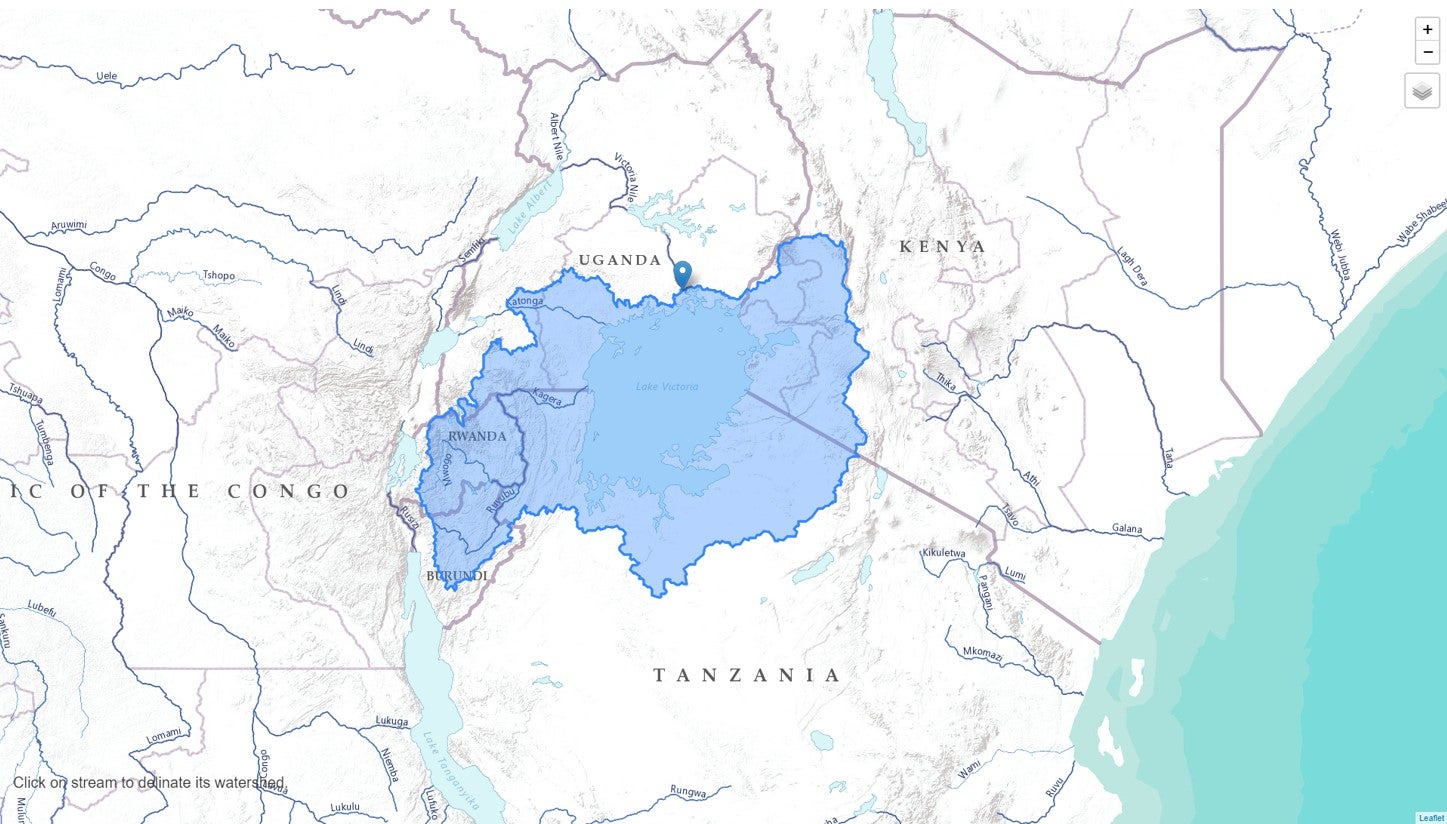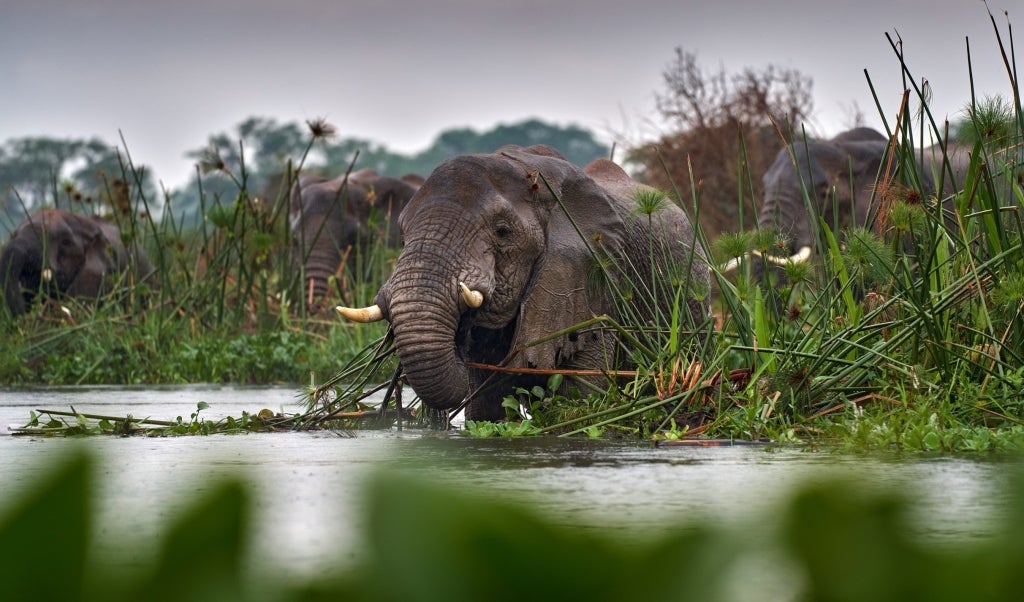 Lake Victoria basin. Image credit: World Bank Geo Watershed Generator
Lake Victoria basin. Image credit: World Bank Geo Watershed Generator
The unabated degradation of a single water body can spell great misfortune for millions of people living in a region already weighed down by climate change, fragility, population growth, and poverty. Yet, if protected, this body of water has the potential to serve as an economic powerhouse – capable of creating green jobs, supporting subsistence and market economies, and securing the future of major population centers several hundred kilometers away. That is the promise and potential of the largest of the African Great Lakes – Lake Victoria. Lake Victoria is shared by three riparian countries: Kenya, Tanzania, and Uganda, with Rwanda and Burundi being part of the upper watershed draining into the lake.
Key drivers of water quality deterioration
In 2020, with support from the Cooperation in International Water in Africa (CIWA), a multi-sector team led by the World Bank Water Global Practice, set out to identify the key drivers of continued degradation of this precious transboundary lake. The team identified three major anthropogenic factors:
- Unsustainable land management and agricultural practices, including indiscriminate wetland and forest reclamation that loosen soil, deplete buffering capacity offered by wetlands, load runoff with agro-chemicals and livestock waste, and release nitrogen and phosphorous into the atmosphere,
- Discharge of untreated wastewater from urban areas and informal settlements into the lake and rivers upstream, and
- Discharge of untreated effluents and wastewater from a wide range of industries in the basin.
As a result of these drivers, invasive plant species such as water hyacinth flourish, obstructing navigation and power generation; turbidity and anoxic (lacking oxygen) zones increase, depleting fish stock and biodiversity; the cost of treating water for domestic use rises; and infants living in the basin get exposed to pathogens capable of stunting their lifelong development.

Climate change will exacerbate impacts
These impacts are exacerbated when they interplay with other pressures such as internal migration caused by climate change. The World Bank estimates that tens of millions of lake basin residents will be displaced by climate change by 2050. Several of these migrants will come to depend on the Lake. As larger populations compete for resources in decline, livelihoods, food security, and adaptive capacity of all will become increasingly fragile.
Conclusions of the multi-sector assessment of continued deterioration of the lake
So why hasn’t anyone rung the alarm bells yet? Efforts to restore the lake have in fact been ongoing for more than two decades. However, these efforts have been relatively small-scale and spread across disparate activities targeting different drivers of pollution across the basin. Such efforts alone can tackle only a small fraction of the overall challenge.
To achieve results at scale, key drivers of pollution need to be prioritized and addressed separately through dedicated, long-term, and comprehensive approaches – coordinated across administrative boundaries and encompassing information, institutional strengthening, and investment needs.
Raising the water quality agenda to the top
As an important first step toward addressing information and institutional gaps, the CIWA-funded Nile Cooperation for Climate Resilience (NCCR) Project is bringing together the Nile Basin countries through a US$4 million program on enhancing the availability and use of water quality data in the region. Comprising three sub-components, the program focuses on:
- Improving the availability of water quality data through provision of equipment and preparation of a dedicated water quality database,
- Building capacity to undertake multi-criteria decision analysis for investment planning and prioritization, and
- Harmonizing policies and institutions that govern water quality management in the Lake Victoria Basin (LVB) – including capture and sharing of data, discharge standards, and cooperative water quality investment planning.
The third sub-component is being led by the Lake Victoria Basin Commission – the East African Community’s (EAC’s) specialized institution responsible for coordinating sustainable development and management of the Lake Victoria Basin in the 5 EAC Partner States.
It’s important to note here that the Lake Victoria Basin is a sub-basin of the Nile Equatorial Lakes region of the Nile Basin, also the source of the White Nile.
Next steps – zooming in on lake-wide inclusive sanitation
Taking heed of lessons from the multi-sector review – including on the need to be selective and the importance of a focus on people and livelihoods for sustainability of results, the World Bank Water Global Practice will now engage with the LVB countries on one of the key drivers of lake deterioration – the discharge of untreated human waste.
Supported by the Korea Green Growth Trust Fund (KGGTF), and building on the Green, Resilient, and Inclusive Development and Citywide Inclusive Sanitation approaches, the engagement will focus on developing a regional strategy for providing inclusive sanitation services in cities and towns that release untreated human waste into the lake. The KGGTF Year-9 Grant ̶̶ Supporting Lake Wide Inclusive Sanitation for Improving Water Quality in the Lake Victoria Basin ̶̶ will focus on working with the private sector to create low-skill green jobs along the sanitation service chain, prioritizing resource recovery and reuse, and integrating green and gray technologies to contribute to a greener recovery post-Covid.

This is the first step in one of many such focused efforts needed to restore the lake. Billions of dollars and years of collaborative effort will be needed. However, if the resolve to work together seen in recent discussions with regional partners is any indicator, Lake Victoria will return to her former glory and power a key regional economic zone in East Africa in the years to come.



Join the Conversation